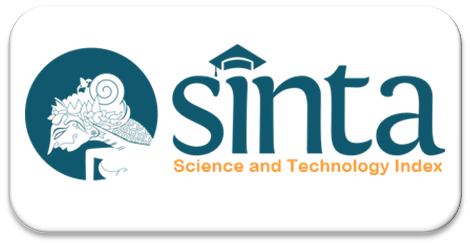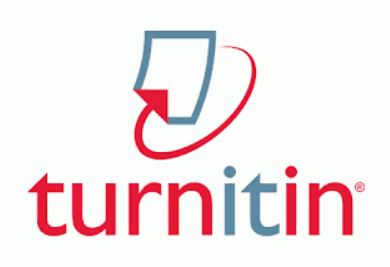Kaitan Pemanfaatan Jamban Dan Pemanfaatan Air Dengan Angka Kejadian Diare Di Desa Kracak Kecamatan Ajibarang Kabupaten Banyumas
Abstract
Diarrhea is a bowel movement in which the stool is liquid or semi-liquid, in which its water content is more than 200 ml/24 hours. Health center 1 in Ajibarang with 2.440 incidence cases of diarrhea is a health center with the highest cases of diarrhea in Banyumas. Several factors which can affect the incidence of diarrhea include the latrines and water utilization.
The purpose of this study is to determine the relationship between the utilization of latrines and water with the incidence of diarrhea in the Village of Kracak Ajibarang in 2013. The number of samples were 72 respondents, 36 patients suffered from diarrhea and 36 didn’t. The design of this study was explanatory research with case-control approach. The analysis of the data used univariate, bivariate analyzes (Chi Square), and multivariate analysis.
The results show that Diarrhea sofferers in the village of Kracak who used clean latrines were 20 respondents (55.56%), and those who used clean water and didn’t suffer from diarrhea were 25 respondents (69.44%). From the relationship test, the p value of latrines utilization variable is 0.056 > 0.05, and p value of water utilization is 0.250 > 0.05. It indicates that there is no significant relationship between the utilization of latrines and the utilization of water with the incidence rate of diarrhea in the Village of Kracak, Ajibarang 2012, the utilization of latrines has its significant value sig. = 0.813 > 0.05, and the utilization of water has its significant value sig. = 0.617 > 0.05. In conclusion there is no association between the utilization of latrines and the utilization of water with the incidence rate of diarrhea in the Village of Kracak, Ajibarang.
Key Words : Diarrhea, water, latrines
References
Adisasmito. W, 2007. Faktor Risiko Pada Bayi dan Balita di Indonesia. Jakarta: Universitas Indonesia.
Arikunto, S. 2006. Prosedur Penelitian Suatu Pendekatan Praktek. Jakarta: PT Rineka Cipta.
Azwar. S, 2008, Rebilitas dan Validitasi. Yogyakarta : Pustaka Pelajar. Chandra, B. 2008. Metodologi Penelitian Kesehatan. Jakarta: EGC.
Depkes RI, 2004. Buku Pedoman Pelaksanaan Program P2 Diare. Jakarta: Depkes RI.
, 2011. Buku Pedoman Pengendalian Penyakit Diare. Jakarta: Ditjen PP dan PL.
Dinas Kesehatan Kabupaten Banyumas. 2011. Rekapitulasi: penyakit diare yang
dirawat di sarana kesehatan dan kader. Purwokerto: Dinkes Banyumas.
Hadi, A. 2001. Hygiene Makanan. Jakarta: Fakultas Kesehatan Masyarakat: Universitas Indonesia.
Hendarwanto, 2006. Diare akut Karena Infeksi, Dalam: Waspadji S, Rachman. Hidayat, A. 2008. Metode Penelitian Keperawatan Dan Teknik Analisa Data. Jakarta: Salemba Medika.
Kepmenkes No. 852 Tahun 2008 tentang Strategi Nasional Sanitasi Total Berbasis Masyarakat.
Noerolandra, 2006. Kejadian Diare dan Lingkungan Keluarga. Jakarta : Gramedia. Notoatmodjo. 2003. Pendidikan Dan Perilaku Kesehatan. Jakarta: Rineka Cipta.
Nursalam. 2008. Konsep Dan Penerapan Metodologi Penelitian Ilmu
Keperawatan. Jakarta: Salemba Medika
Sarudji, D. 2006. Kesehatan Lingkungan. Cetakan ketiga. Surabaya: Media Ilmu.
Widoyono, 2008. Epidemologi, Penularan Pencegahan dan Pemberantasan
Penyakit Tropis. Jakarta: Erlangga.
Wijayanti. 2008. Sanitasi Makanan. Dikutip dari: http://ocw.unnes.ac.id. diakses pada tanggal 21 Oktober 2011.
Downloads
Published
How to Cite
Issue
Section
License
Submitted paper will be firstly reviewed by the editors to determine whether the paper meet the edition theme and submission guidelines. Papers which meet the theme and the guidelines will be assigned to selected reviewers for peer-reviews. Viva Medika: Jurnal Kesehatan, Kebidanan dan Keperawatan is a double blind peer-reviewed journal which involves reviewers based on their experties relevant to the topic of the paper. Final decision of paper acceptance is solely decided by the editors according to reviewers' comment.
Plagiarism and self-plagiarism are prohibited. Viva Medika: Jurnal Kesehatan, Kebidanan dan Keperawatan uses PlagiarismCheckerX and iThenticate to scan papers for detecting plagiarism. Thus, Appropriate citation and quotation should be used

.png)








